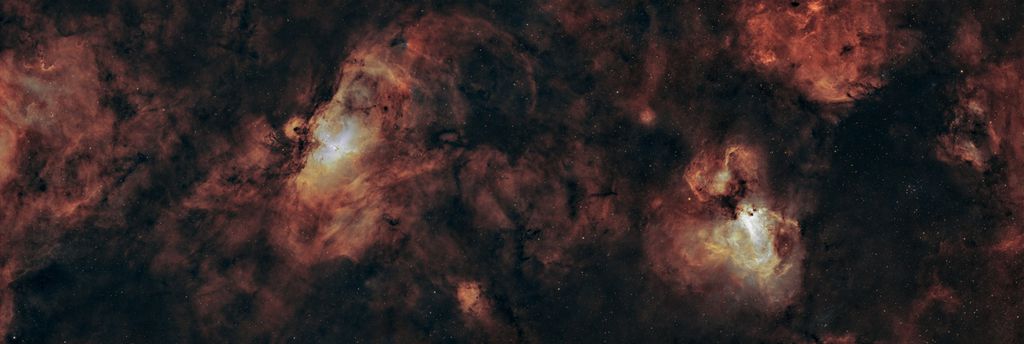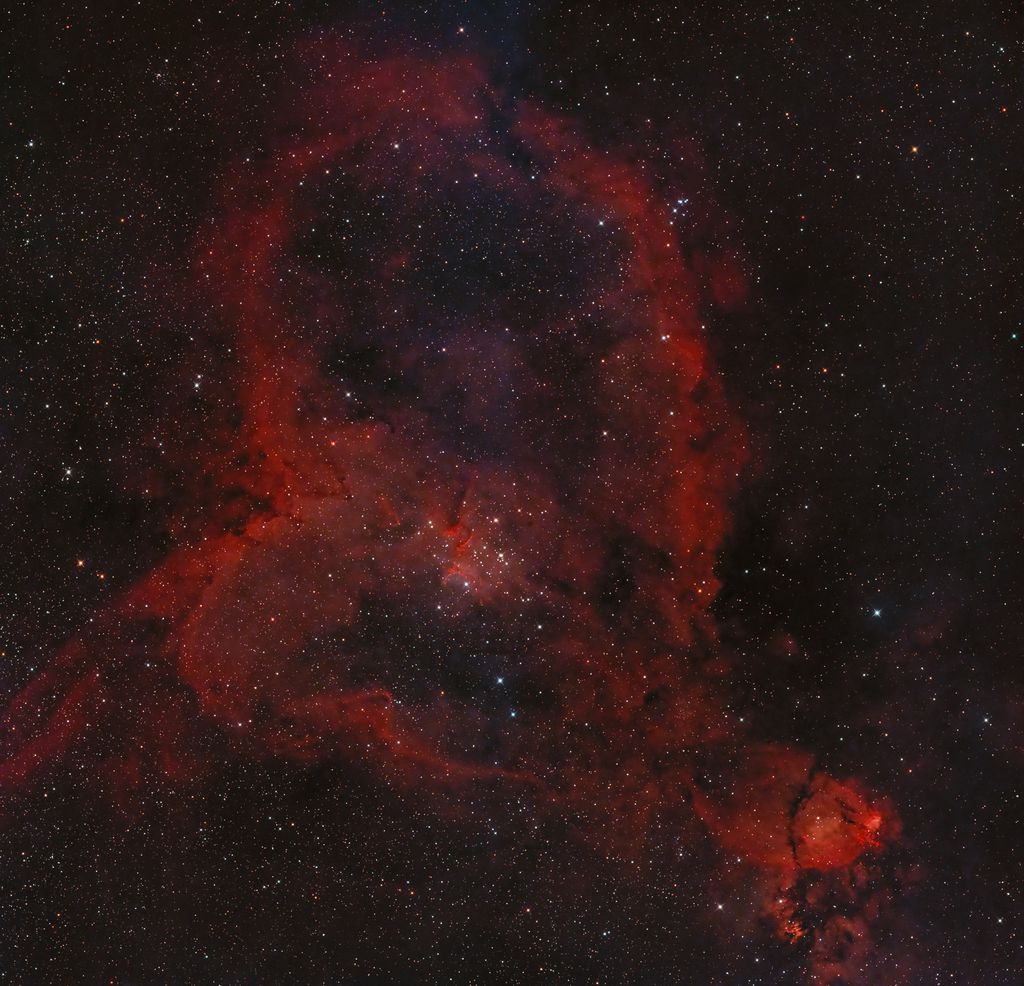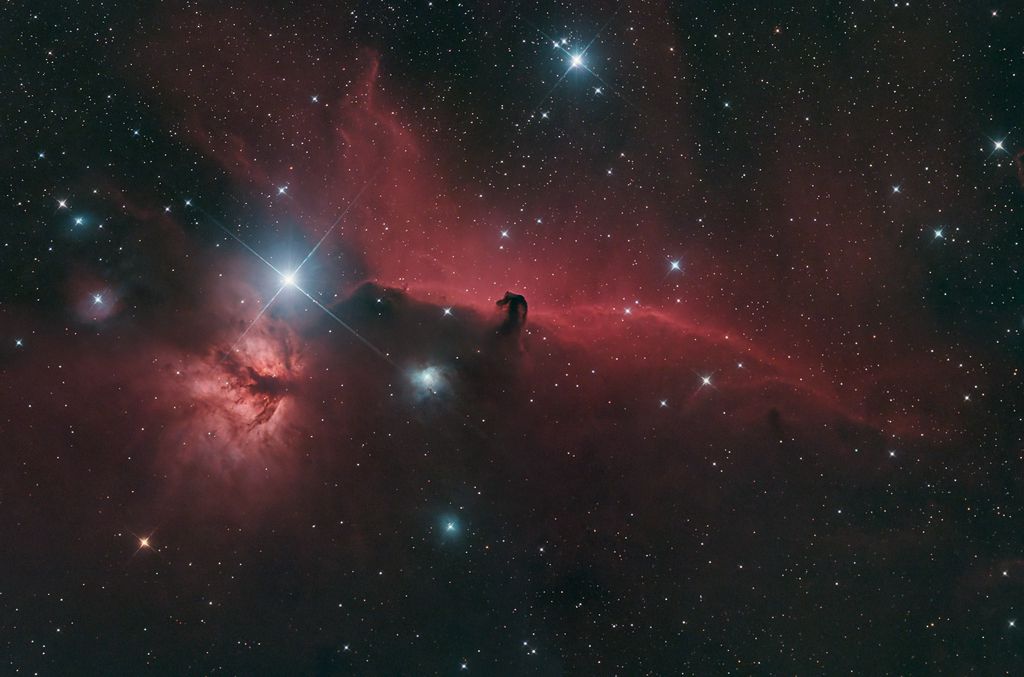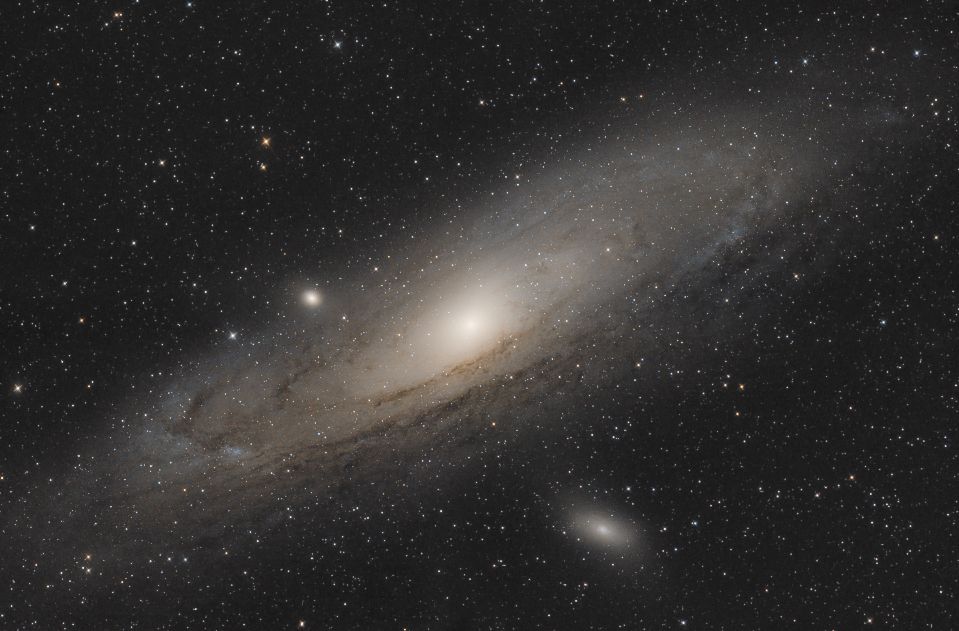My Process with it is usually:
* Darks can be shot whenever, as long as you have the same Gain, Offset, Temperature Setpoint and Duration as your light frames, it doesn't matter when you take them... My current darkframe library is nearly 6 months old, and still calibrates the data brilliantly.
1: Shoot all the RGB Lights for all panels.
Note: I will be sure to not rotate the camera or remove filters at all during this time.
2: Shoot the RGB Flats/Flat darks.
3 Shoot all the Ha/OIII Lights for all panels
Note: Again, I will be sure to not rotate the camera or remove filters at all during this time.
4: Shoot the Ha/OIII Flats/Flat darks.
5. Calibrate/Integrate all the individual panel data sets for both RGB and Ha/OIII.
6. Stitch your mosaics for both Ha/OIII and RGB separately.
7. Run your favorite gradient correction procecss on the two stitched mosaics.
8. Use dynamic alignment to align the two merged mosaics together, then crop as required.
Then, go about processing the two images however you normally would.
I typically extract the Ha from the Ha/OIII data, then process then run deconvolution and noise reduction (I use bxt and nxt, but you can do this however you choose), then extract the stars from the Ha data and discard them, then run deconvolution and noise reduction on the RGB image, extract the stars and process them separately. I will then split the channels for the RGB image, add the Ha to the R in pixel math, then recombine the Ha+R, G and B channels, add the stars back in, then image solver and SPCC, and then process the image as per usual, as if it was a straight RGB image...
Thats just me.
2 panels, 21hrs per panel, Ha/OIII and SII...







